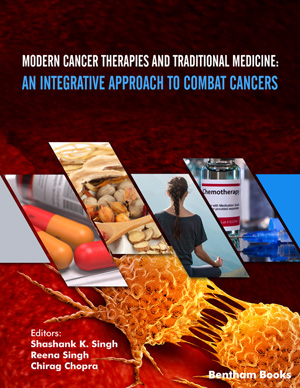
Abstract
Oxidative stress (OS) is a condition in which the body has an unbalanced oxidative and antioxidant effect. Oxidative stress has emerged as a critical component in the onset and progression of numerous diseases, including liver cancer and chronic liver disease caused by the hepatitis C virus and hepatitis B virus. Reactive oxygen species (ROS) are the most prevalent reactive chemical species involved in the oxidative stress response during the progression of the disease. Oxidative stress has a unique role in the development of hepatocellular carcinoma (HCC), and excessive ROS production is a common occurrence in liver illnesses of various etiologies. In response to various deleterious stimuli, the liver shows manifestations of lipid accumulation, oxidative damage, inflammatory infiltration, and immune response, which interact with each other in a mutually reinforcing manner, collectively exacerbating liver damage and malignant transformation. The intracellular buildup of ROS is a two-edged sword for tumor advancement. ROS are tumorigenic, and low amounts of ROS can trigger different signaling pathways that promote proliferation, survival, and migration, among other aspects. However, excessive oxidative stress can induce tumor cell death. Understanding the mechanisms of oxidative stress in hepatocellular carcinogenesis is beneficial for the prevention and surveillance of hepatocellular carcinoma in humans. An improved knowledge of the impacts and potential implications of oxidative stress regulation in therapeutic strategies will likely allow us to find new therapeutic targets for cancer. Oxidative stress also plays a significant role in the treatment of hepatocellular carcinoma and the mechanisms of drug resistance involved. This paper reviews recent studies on oxidative stress in HCC that are more reliable and important, and provides a more comprehensive view of the development of the treatment of HCC based on the relevant summaries of the effect of oxidative stress on the treatment.
Graphical Abstract
[http://dx.doi.org/10.1016/j.phrs.2016.10.022] [PMID: 27794498]
[http://dx.doi.org/10.1016/j.arr.2012.10.004] [PMID: 23123177]
[http://dx.doi.org/10.1016/S0899-9007(00)00570-0] [PMID: 11240347]
[http://dx.doi.org/10.3322/caac.21660] [PMID: 33538338]
[http://dx.doi.org/10.1002/hep.31288] [PMID: 32319693]
[http://dx.doi.org/10.1038/s41572-020-00240-3] [PMID: 33479224]
[http://dx.doi.org/10.1016/j.jhep.2021.08.012] [PMID: 34453963]
[http://dx.doi.org/10.1016/j.jhep.2019.08.017] [PMID: 31954487]
[http://dx.doi.org/10.1177/1073274817729245] [PMID: 28975830]
[http://dx.doi.org/10.1186/1479-5876-9-171] [PMID: 21985599]
[http://dx.doi.org/10.2174/1568009616666160926124043] [PMID: 27677955]
[http://dx.doi.org/10.1038/emm.2016.119] [PMID: 27811934]
[http://dx.doi.org/10.1016/j.freeradbiomed.2018.06.021] [PMID: 29935260]
[http://dx.doi.org/10.1155/2016/4234061] [PMID: 28070230]
[http://dx.doi.org/10.3748/wjg.v26.i38.5759] [PMID: 33132633]
[http://dx.doi.org/10.1099/vir.0.000134] [PMID: 25828947]
[http://dx.doi.org/10.1093/carcin/bgh207] [PMID: 15180947]
[http://dx.doi.org/10.1016/j.jhep.2016.12.018] [PMID: 28027970]
[http://dx.doi.org/10.3390/ijms23052787] [PMID: 35269929]
[http://dx.doi.org/10.3390/v7062745] [PMID: 26035647]
[http://dx.doi.org/10.1016/j.jhep.2008.12.026] [PMID: 19303156]
[http://dx.doi.org/10.1073/pnas.171311298] [PMID: 11481452]
[http://dx.doi.org/10.1111/j.1365-2893.2012.01597.x] [PMID: 22967106]
[http://dx.doi.org/10.1139/bcb-2017-0321] [PMID: 30153423]
[http://dx.doi.org/10.3389/fendo.2020.607011] [PMID: 33362721]
[http://dx.doi.org/10.3389/fonc.2019.00762] [PMID: 31456946]
[http://dx.doi.org/10.1038/s41575-019-0210-2] [PMID: 31605031]
[http://dx.doi.org/10.3390/biomedicines9060687] [PMID: 34204571]
[http://dx.doi.org/10.1038/nature16969] [PMID: 26934227]
[http://dx.doi.org/10.1080/10715760000300721] [PMID: 10885624]
[http://dx.doi.org/10.1136/gut.47.5.710] [PMID: 11034590]
[http://dx.doi.org/10.1007/s10620-013-2622-0] [PMID: 23504353]
[http://dx.doi.org/10.1179/1351000214Y.0000000101] [PMID: 25117650]
[http://dx.doi.org/10.1089/ars.2021.0068] [PMID: 34036799]
[http://dx.doi.org/10.3892/etm.2020.8601] [PMID: 32266042]
[http://dx.doi.org/10.1016/j.freeradbiomed.2012.12.003] [PMID: 23246655]
[http://dx.doi.org/10.1126/science.119.3097.623] [PMID: 13156638]
[http://dx.doi.org/10.1007/BF00207507] [PMID: 8862511]
[http://dx.doi.org/10.3748/wjg.v12.i38.6098] [PMID: 17036378]
[http://dx.doi.org/10.1016/j.freeradbiomed.2017.03.006] [PMID: 28300668]
[http://dx.doi.org/10.1016/0378-4274(92)90086-Y] [PMID: 1488774]
[http://dx.doi.org/10.3748/wjg.v20.i47.17756] [PMID: 25548474]
[http://dx.doi.org/10.1016/j.cyto.2020.155402] [PMID: 33352397]
[http://dx.doi.org/10.1016/j.jhep.2012.08.018] [PMID: 22940046]
[http://dx.doi.org/10.1093/carcin/5.6.719] [PMID: 6426812]
[http://dx.doi.org/10.1016/0300-483X(94)03008-P] [PMID: 7761996]
[http://dx.doi.org/10.1016/0891-5849(96)00019-6] [PMID: 8818628]
[http://dx.doi.org/10.1093/carcin/bgl234] [PMID: 17127712]
[http://dx.doi.org/10.1016/j.canlet.2008.01.006] [PMID: 18280645]
[http://dx.doi.org/10.1007/s11010-014-2306-x] [PMID: 25543524]
[http://dx.doi.org/10.3389/fphar.2019.00467] [PMID: 31133854]
[http://dx.doi.org/10.1002/ijc.29321] [PMID: 25387451]
[http://dx.doi.org/10.1016/j.jhep.2018.05.036] [PMID: 29886156]
[http://dx.doi.org/10.1007/s10620-021-07206-9] [PMID: 34410573]
[http://dx.doi.org/10.1016/j.addr.2021.113888] [PMID: 34314787]
[http://dx.doi.org/10.3390/ijms22084156] [PMID: 33923817]
[http://dx.doi.org/10.1371/journal.pone.0178473] [PMID: 28570615]
[http://dx.doi.org/10.1016/j.semcancer.2017.06.005] [PMID: 28634055]
[http://dx.doi.org/10.3109/10715762.2014.966706] [PMID: 25236567]
[http://dx.doi.org/10.3390/ijms21062164] [PMID: 32245205]
[http://dx.doi.org/10.3390/ijms22095016] [PMID: 34065108]
[http://dx.doi.org/10.1073/pnas.0407076101] [PMID: 15505215]
[http://dx.doi.org/10.4161/gmic.27917] [PMID: 24637602]
[http://dx.doi.org/10.1016/j.freeradbiomed.2016.10.495] [PMID: 27989756]
[http://dx.doi.org/10.1126/stke.121pe24] [PMID: 18506033]
[http://dx.doi.org/10.1016/j.jfma.2019.01.002] [PMID: 30655033]
[http://dx.doi.org/10.1038/nrgastro.2017.72] [PMID: 28676707]
[http://dx.doi.org/10.1155/2016/8413032] [PMID: 26682014]
[http://dx.doi.org/10.1155/2020/8810785] [PMID: 33425217]
[http://dx.doi.org/10.1016/j.phrs.2022.106113] [PMID: 35124208]
[http://dx.doi.org/10.1002/hep.30467] [PMID: 30561826]
[http://dx.doi.org/10.4161/cbt.8.20.9436] [PMID: 19770576]
[http://dx.doi.org/10.3389/fonc.2021.758549] [PMID: 34796113]
[http://dx.doi.org/10.1016/j.tox.2018.01.005] [PMID: 29341879]
[http://dx.doi.org/10.1158/1535-7163.MCT-12-0093] [PMID: 22902857]
[http://dx.doi.org/10.1038/s41401-020-0478-3] [PMID: 32699265]
[http://dx.doi.org/10.1111/jpi.12358] [PMID: 27484637]
[http://dx.doi.org/10.1158/1078-0432.CCR-11-0816] [PMID: 21825039]
[http://dx.doi.org/10.1007/s00109-012-0966-0] [PMID: 23052483]
[http://dx.doi.org/10.3389/fonc.2022.693395] [PMID: 35321425]
[http://dx.doi.org/10.1002/ijc.25817] [PMID: 21128229]
[http://dx.doi.org/10.3390/antiox10091336] [PMID: 34572967]
[http://dx.doi.org/10.1002/ijc.24853] [PMID: 19728331]
[http://dx.doi.org/10.1038/s41392-021-00594-4] [PMID: 34001851]
[http://dx.doi.org/10.1016/j.freeradbiomed.2019.12.021] [PMID: 31870798]
[http://dx.doi.org/10.1136/gutjnl-2019-318668] [PMID: 31439637]
[http://dx.doi.org/10.1073/pnas.1508779113] [PMID: 26811478]
[http://dx.doi.org/10.1038/s41467-019-12606-7] [PMID: 31615983]
[http://dx.doi.org/10.3390/molecules25235639] [PMID: 33266043]
[http://dx.doi.org/10.1016/j.semcdb.2017.05.023] [PMID: 28587975]
[http://dx.doi.org/10.1016/j.jhep.2013.03.033] [PMID: 23567086]
[http://dx.doi.org/10.1136/jitc-2020-001392] [PMID: 33243934]
[http://dx.doi.org/10.1155/2017/1485283] [PMID: 28698765]























